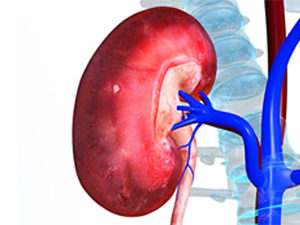Clinical research that has been carried out on the plant over the years demonstrated antilithic, hypotensive,  antihepatotoxic, antiviral, diuretic, antibacterial, analgesic, antimutagenic, antispasmodic, and hypoglycemic activities. Chanca piedra, when used as a natural remedy by infusing the whole plant or just the aerial parts in hot water, was found to help urinary and biliary conditions. Some of these conditions are gallbladder and kidney stones, flu, cold, hepatitis, tuberculosis. For bacterial infections, it is quite effective in treating prostatitis, cystitis, urinary tract infections and venereal diseases.
antihepatotoxic, antiviral, diuretic, antibacterial, analgesic, antimutagenic, antispasmodic, and hypoglycemic activities. Chanca piedra, when used as a natural remedy by infusing the whole plant or just the aerial parts in hot water, was found to help urinary and biliary conditions. Some of these conditions are gallbladder and kidney stones, flu, cold, hepatitis, tuberculosis. For bacterial infections, it is quite effective in treating prostatitis, cystitis, urinary tract infections and venereal diseases.
Chanca piedra is also widely employed for hypertension and diabetes. It is administered on humans because of its analgesic, antispasmodic, diuretic, febrifugal, stomachic, and cell protective properties.
– Chanca piedra has been proven to effectively soften gallstones and kidney stones thereby making it easy for the stones to pass out of the body system. In a research conducted in Brazil at the Federal University of Santa Catarina in 1984 on the plant, the result showed that the leaves and stem of the plant has an alkaloid (phyllanthoside) which means that they have strong antispasmodic activity. The resulting effect of this on the body is the relaxation of the muscles.
The conclusion of the study stated that chanca piedra has spasmolytic action which is why they are very effective in expelling stones. Brazilian researchers also found that the root of the plant has powerful, long-lasting pain-blocking effect.
– Clinical studies carried out on the plant also revealed their potential for reducing levels of urinary calcium (1). A study in which 150 patients partook in the study for a period of 6 months whereby they were administered an extract of the plant showed that the extract reduced the incidence of stone formation in the patients. The study read: “Regular self-administration of P. niruri after extracorporeal shock wave lithotripsy for renal stones results in an increased stone-free rate that appears statistically significant for lower caliceal location. Its efficacy and the absolute lack of side effects make this therapy suitable to improve overall outcomes after extracorporeal shock wave lithotripsy for lower pole stones.”(2)
– The plant is also known to ameliorate issues of liver problems. A study by Patel Institute of Pharmaceutical Education and Research showed that the compounds found in Chanca piedra may serve as liver protection. The ability of the plant to protect the liver has been attributed to not less than two novel plant chemicals found in chanca piedra namely: hypophyllanthin and phyllanthin.(3)
– Two human studies on children with jaundice and hepatitis found that chanca piedra has antihepatotoxic effect.  According to Indian researchers, chanca piedra as a single drug was effective in treating jaundice in children while British researchers found that an extract from the plant also helped the liver function of children with hepatitis return to normalcy in as little as 5 days.
According to Indian researchers, chanca piedra as a single drug was effective in treating jaundice in children while British researchers found that an extract from the plant also helped the liver function of children with hepatitis return to normalcy in as little as 5 days.
– A 2000 study carried out on the plant revealed that chanca piedra in a water extract and administered orally on mice with liver cancer increased their life span from 33 to 53 weeks without any other form of treatment administered to the mice. In another research, previously treated mice who were administered chanca piedra were once again induced with liver cancer. After administering the chanca piedra extract on the mice, it was discovered that the extract lowered tumor incidence, levels of liver cancer marker, levels of carcinogen-metabolizing enzymes, and liver injury markers. Both studies show that chanca piedra has more of antiproliferative and protective effect against cancer.
